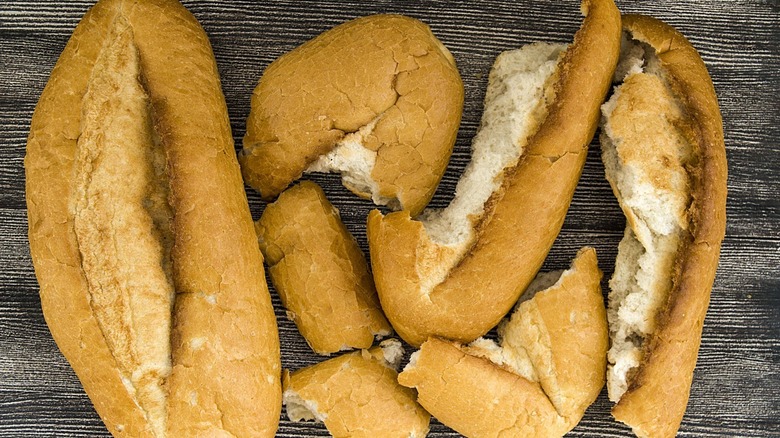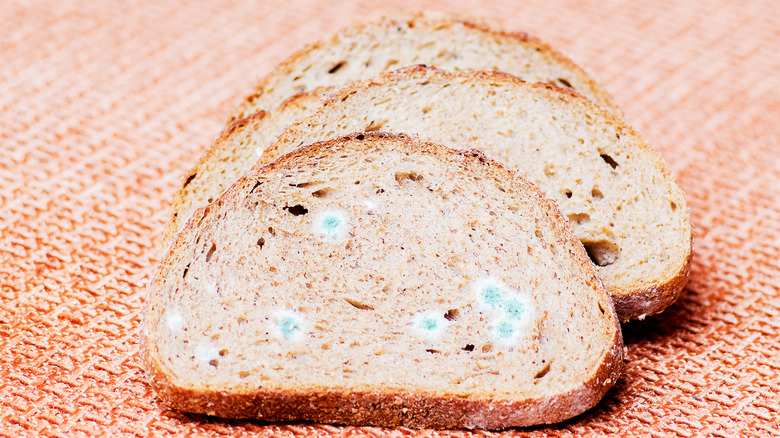Is It Dangerous To Eat Stale Bread?
For most of us, bread is a daily staple. It's usually made with a combination of flour, yeast, water, and any additional desired ingredients, like sugar, salt, or other seasonings. Bread is most commonly used for making tasty sandwiches, as it only needs to be sliced and filled or topped with delicious ingredients such as ham, cheese, and sliced vegetables. But it can also become stale quite easily, so it's important to keep it fresh so that it doesn't develop mold, get stale, or attract unwanted pests. When left at room temperature, bread typically lasts for three to four days (via Healthline).
But how do you know when your bread is no longer fresh? There are a few signs to look for, namely its dry and hard texture, unusual flavor, weird aroma, and mold. However, there are many dishes that require the use of stale bread, such as meatballs, per The Spruce Eats. There are also tasty desserts made from old fruit and stale bread. But is it really that dangerous to eat stale bread when not used in one of these capacities?
A trash can is the best place for moldy bread
According to Healthline, there are many risks when it comes to eating stale bread, especially moldy ones. Many molds produce a poison called mycotoxin, so if you see a bit of mold on your bread and decide just to cut off the moldy part, beware, as that may not be enough to remove all traces of the mold. You shouldn't just cut the mold off old bread because this mold can spread throughout the loaf, even if it's not visible, and eating moldy bread might result in serious digestive issues. It can also weaken our whole immune system, even if it's just inhaled and not eaten.
However, there are some tricks to keep the mold off your bread. Insider reports that "storing your bread in a cool, dry environment like the refrigerator" will help prevent mold growth. Risking your health shouldn't be an option, so your best bet is to throw that loaf of bread (or any other food) in the trash with the first signs of mold.
If your bread doesn't have mold, though, it's pretty much safe to eat. As noted by Cooks Dream, eating bread up to a week after its expiration date is actually fine as long as there aren't any visible signs of bacteria or mold. You may just have to deal with tougher-than-usual bread.

